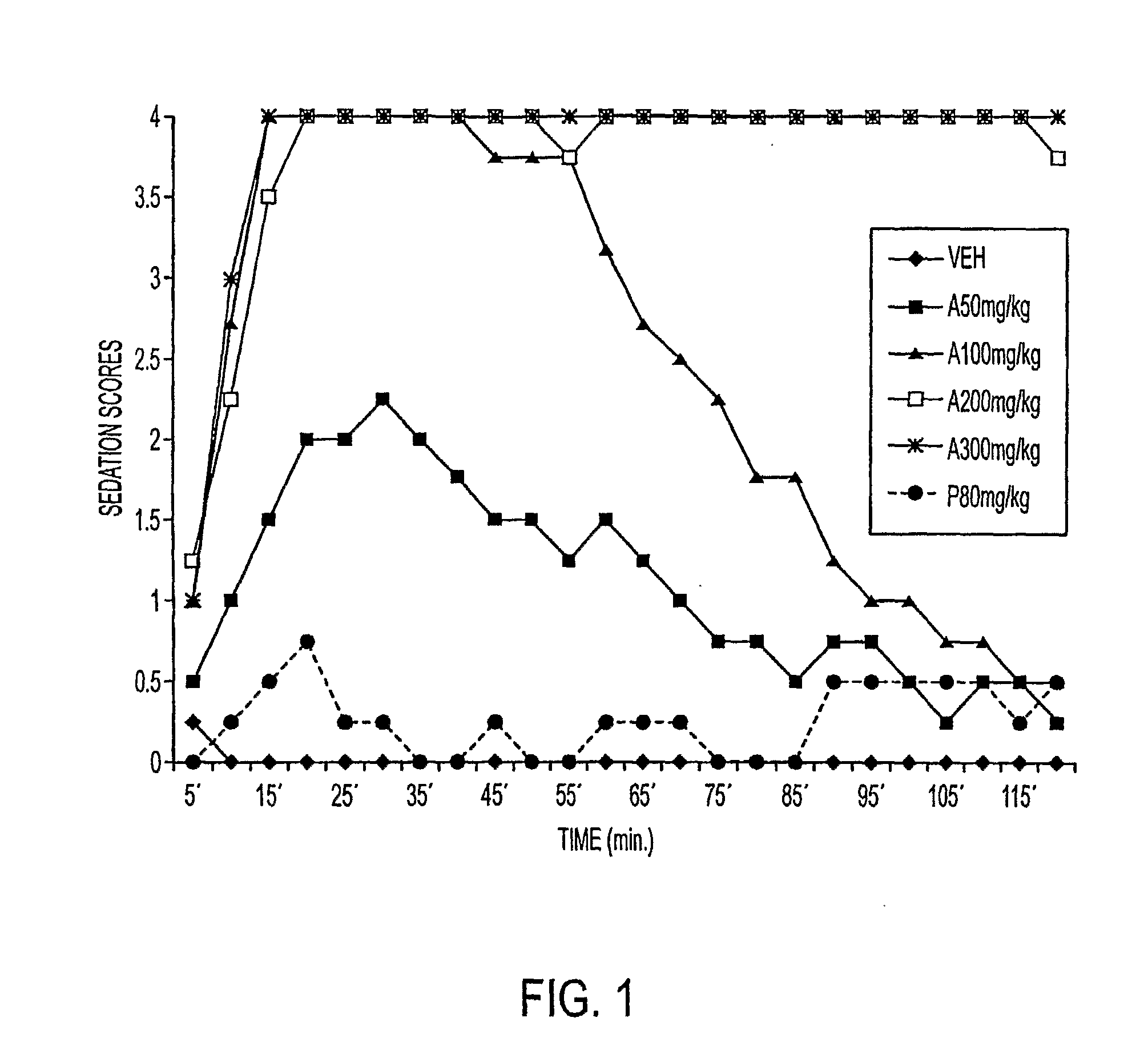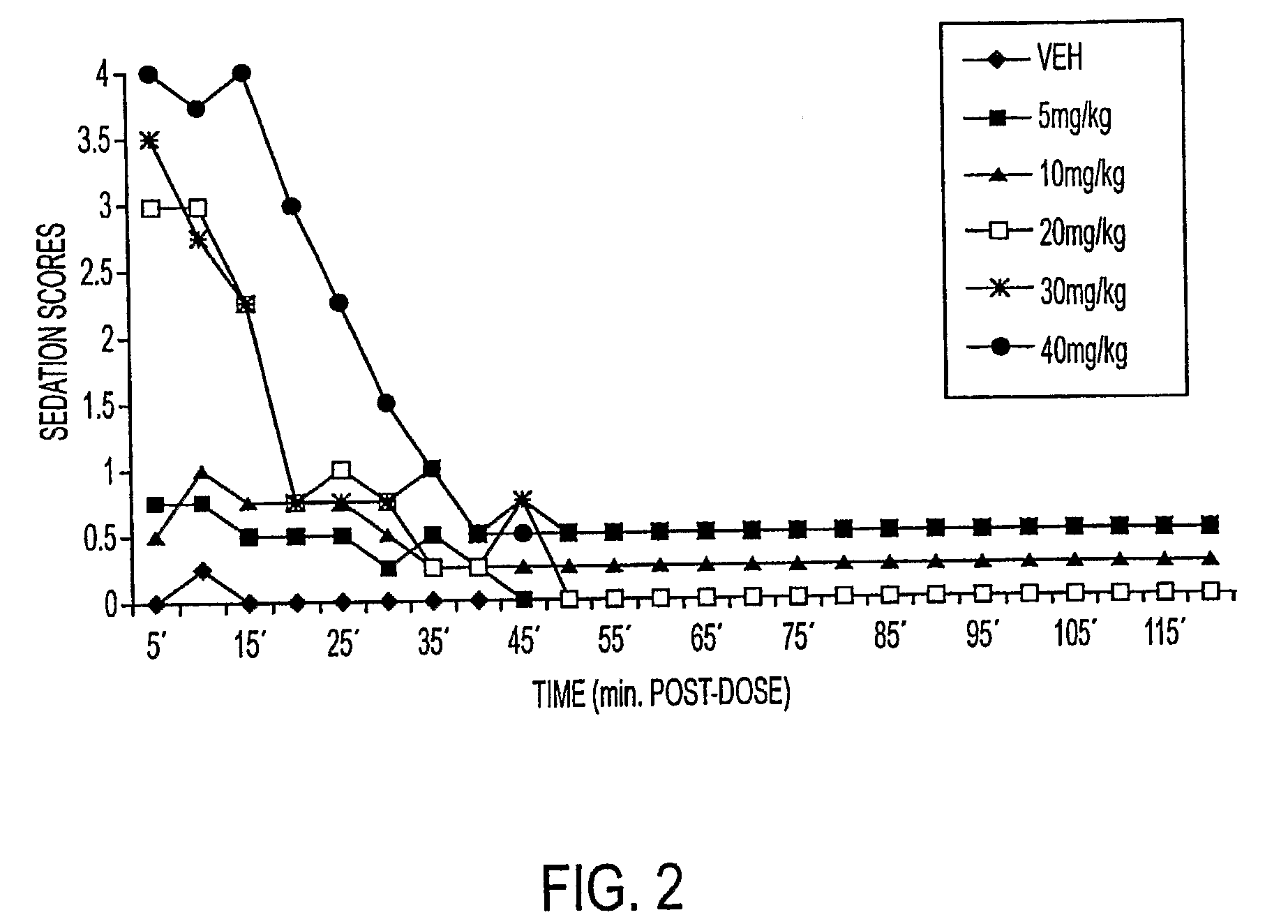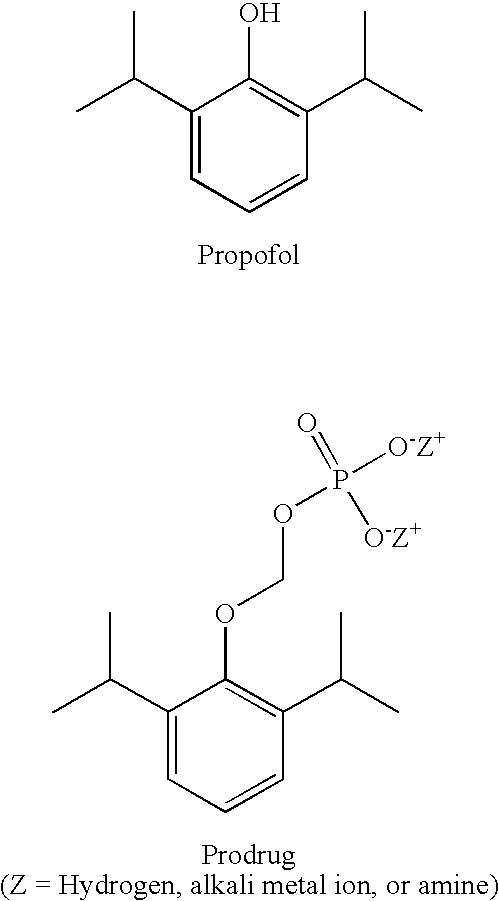Methods of Administering Water-Soluble Prodrugs of Propofol
a technology of water-soluble prodrugs and propofol, which is applied in the directions of biocide, drug compositions, active ingredients of phosphorous compounds, etc., can solve the problems of limited shelf life, postsurgical infections, and inability to detect bacterial or fungal contamination by visual inspection of the vial
- Summary
- Abstract
- Description
- Claims
- Application Information
AI Technical Summary
Benefits of technology
Problems solved by technology
Method used
Image
Examples
example 1
[0044]This example compares the dose-dependent pharmacological effects of a propofol prodrug of Formula I, O-phosphonooxymethyl propofol disodium salt, on rats when administered in single subcutaneous injections to the pharmacological effects observed after intravenous infusion. Young adult male Sprague-Dawley rats (250-300 g, Charles River Laboratories) received subcutaneous doses of vehicle (0.12% Tris / 0.25% monothioglycerol / saline; n=4) or of O-phosphonooxymethyl propofol disodium salt at doses of 50, 100, 200 and 300 mg / kg, dissolved in vehicle to achieve a uniform injection volume of 2 ml / kg body weight (n=2 per dose). The animals' behavior was then scored independently by two blinded but experienced observers in 5-minute intervals for 2 hours according to the following rating scale: 4=loss of consciousness; 3=moderate to deep sedation, markedly reduced responsiveness to external stimuli and slow but generally maintained postural reflexes; 2=“drowsy,” some slowing and sluggishn...
PUM
| Property | Measurement | Unit |
|---|---|---|
| Dimensionless property | aaaaa | aaaaa |
| Dimensionless property | aaaaa | aaaaa |
| Dimensionless property | aaaaa | aaaaa |
Abstract
Description
Claims
Application Information
 Login to View More
Login to View More - R&D
- Intellectual Property
- Life Sciences
- Materials
- Tech Scout
- Unparalleled Data Quality
- Higher Quality Content
- 60% Fewer Hallucinations
Browse by: Latest US Patents, China's latest patents, Technical Efficacy Thesaurus, Application Domain, Technology Topic, Popular Technical Reports.
© 2025 PatSnap. All rights reserved.Legal|Privacy policy|Modern Slavery Act Transparency Statement|Sitemap|About US| Contact US: help@patsnap.com



